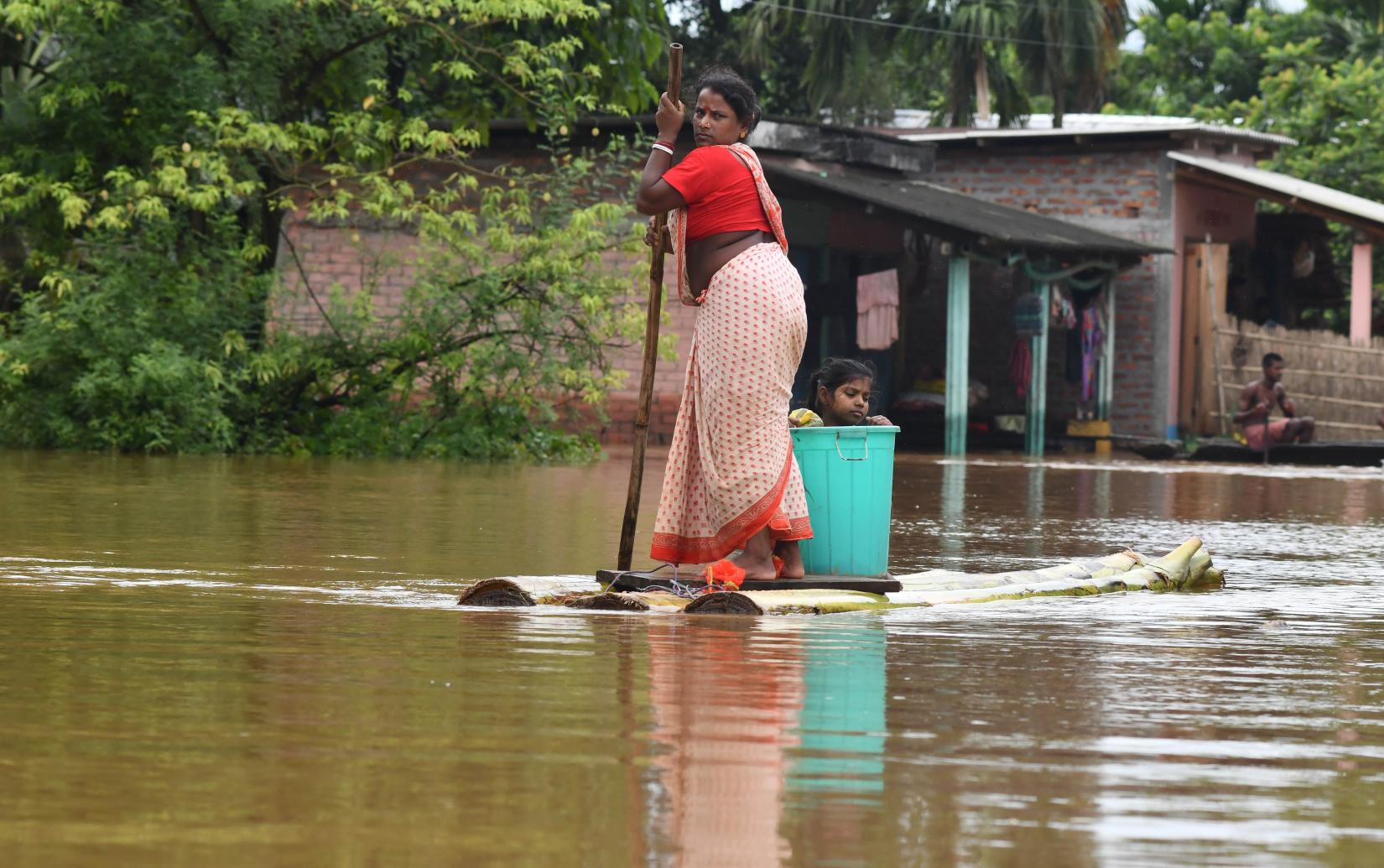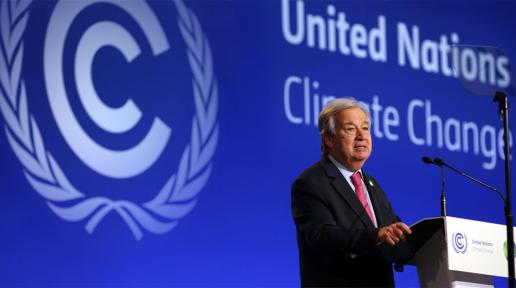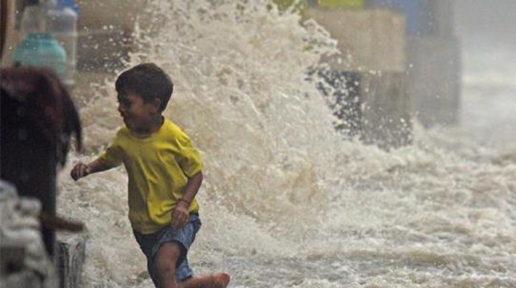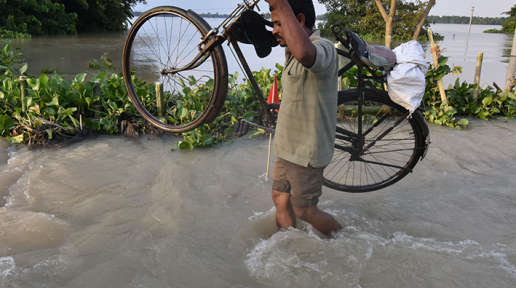The Government of India attaches great importance to issues related to environment sustainability and climate change. Substantial efforts have been committed by GoI to address national developmental and environmental priorities while meeting the obligations under the key multilateral environmental agreements
India is a signatory to United Nations Paris Agreement (2015) and as part of its international commitments has proposed the following Nationally Determined Contributions (NDC)
- The emissions intensity of its GDP would be reduced by 33 - 35% from 2005 level by 2030
- Achieve 40% of electric power installed capacity from non-fossil fuel by 2030
- To Create additional carbon sink of 2.5 -3 billion tonnes of CO2 equivalent through additional forest and tree cover (increase of about 680-817 million tonne of carbon stock)
At the recently concluded COP-26 at Glasgow, India committed to:
- 500 GW of non-fossil fuel energy- a raise in the target from 450 GW to 500 GW by 2030.
- 50 per cent renewable energy in its energy mix by 2030
- reduction in emissions intensity from 35 per cent to 45 per cent by 2030
- reduction in carbon emissions by one billion tonnes by 2030
- net-zero by 2070.

To meet these targets, the government is promoting greater use of renewable energy to meet its energy demand. Renewable energy has a share of 26.5% in the total installed generation capacity in the country. This installed capacity has increase by 286% in the last 7.5 years. Solar tariffs have reduced by more than 75% hitting a record low of Rs 1.99 per unit.
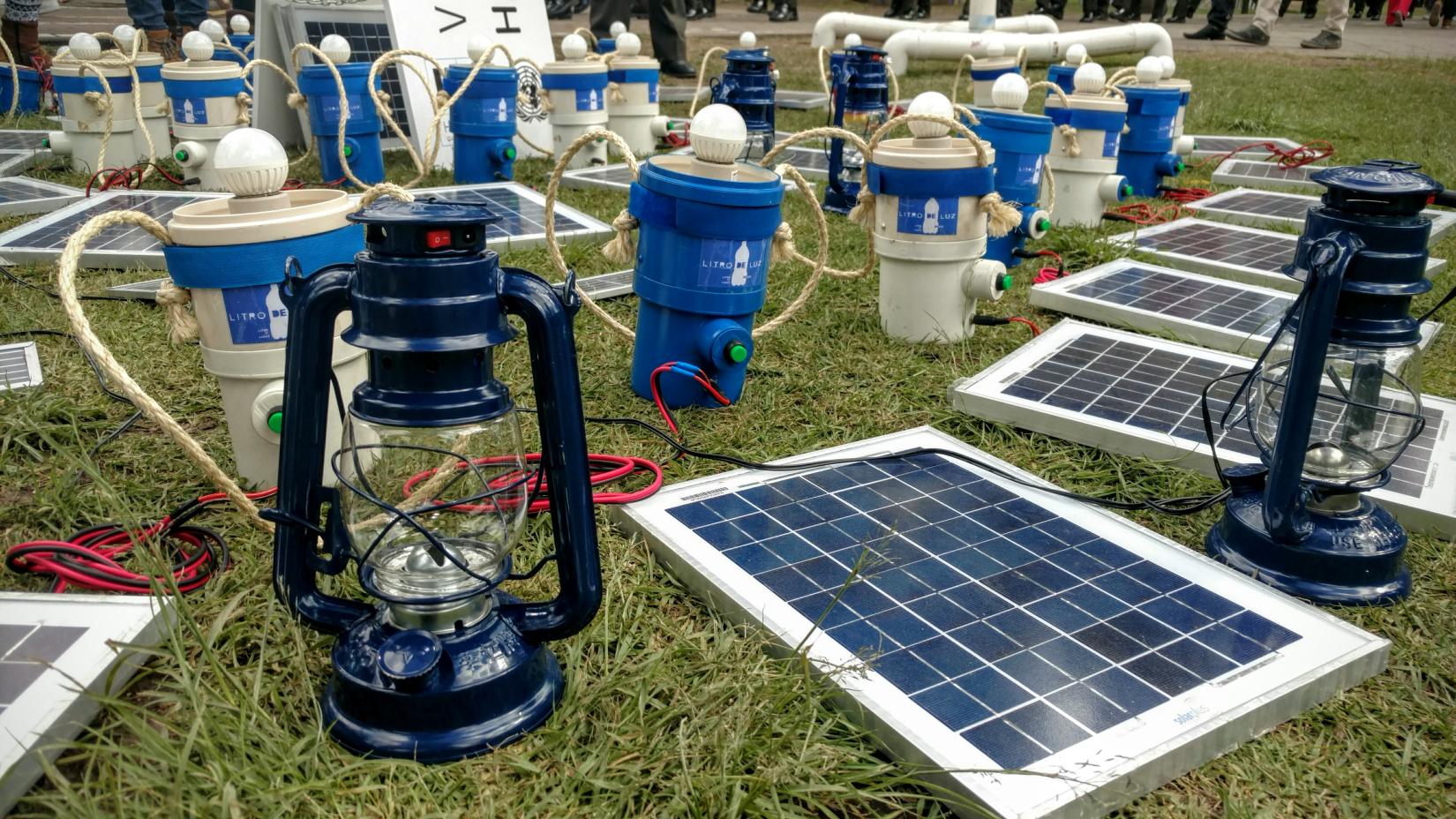
India has a wide array of ecosystems and habitats. India has only 2.4 % of the geographical area of the world, but harbours nearly 8 % of the globally known floral and faunal species. Four out of 35 global biodiversity hotspots of the world are represented in India.
India has committed to eliminating single-use plastic by 2022. The Plastic Waste Management Amendment Rules, 2021, which prohibits identified single use plastic items which have low utility and high littering potential by 2022.
Challenges
Environmental degradation, climate change and disasters, and ineffective waste and chemical management have different and disproportionate impacts, especially on the vulnerable population.
Though electricity coverage in India is nearly 98% of the population, the high energy demands emerging from economic growth, pose a challenge to reducing emissions and growth priorities.
With a big population size living in vulnerable areas, India is susceptible to climate vagaries due to rising temperatures. Due to its coastline, India is vulnerable to cyclones. Many states like Assam, Bihar and Maharashtra flood every year and states like Uttar Pradesh and Madhya Pradesh are prone to drought. Floods, droughts and cyclones will intensify as the earth heats up.
Global warming is likely to intensify the global water cycle, leading to more erratic weather and more violent rain, floods, and drought across Asia. Climate change is likely to intensify Indian monsoons, causing flooding as well as an increase in the frequency and severity of droughts.
In the HKH surface-air temperature has warmed more rapidly than the global average over the last 40 decades. As a result, glaciers are losing mass, snow cover is retreating to higher altitudes and permafrost in warming at faster rates.
Air pollution is amongst the biggest concerns of India. As per WHO (2016) estimates, 10 out of the 20 most populated cities in the world are in India. Global Burden of Disease’ estimates for 2017 that early deaths related to PM2.5 in India are the second highest in the world and ozone related deaths are the highest in the world.
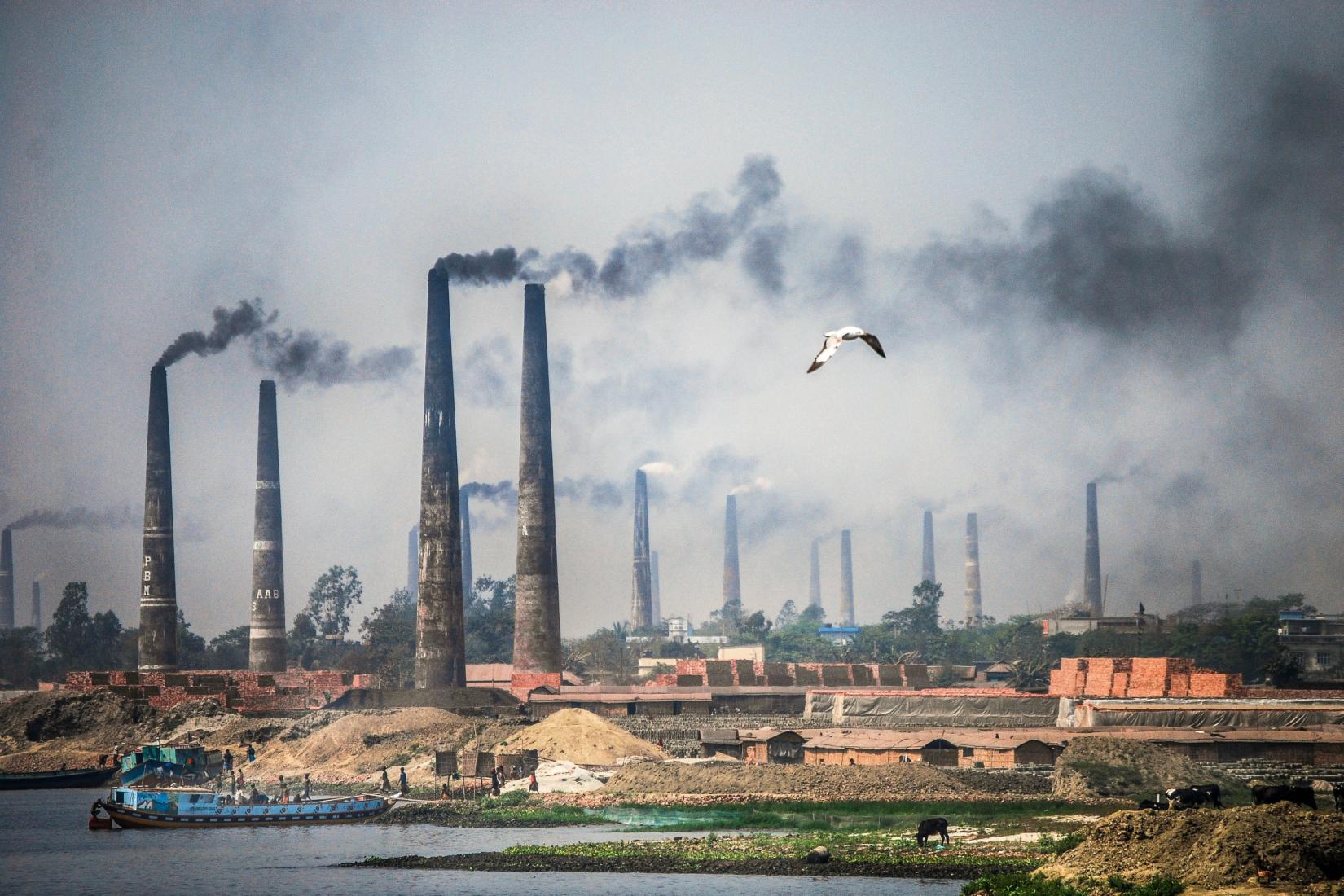
Government interventions
There are several policies and programmes being implemented by GOI that aim at reducing the risks posed by climate change - both to mitigate (by reducing emissions of greenhouse gases), and to adapt (by reducing exposure and vulnerability to expected impacts).The National Action Plan on Climate Change (NAPCC) and the corresponding State Action Plan on Climate Change and (SAPCC) at sub-national levels have been developed outlining existing and future policies and programs addressing climate mitigation and adaptation in various sectors.
The Government of India is also implementing the project “Enhancing Climate Resilience of India’s Coastal Communities'' funded through Green Climate Fund. The project supports the Government of India to enhance the resilience of vulnerable coastal communities to climate change.
The country is also working towards increasing the total forest cover in the country through targeted afforestation programmes like the Green India Mission (GIM). The National Environment Policy mainstreams the environment, including biodiversity, in development planning processes.

The National Clean Air Programme (NCAP) is the national level strategy to tackle the air pollution problem across the country in a comprehensive manner with targets to achieve 20% to 30% reduction in Particulate Matter concentrations by 2024.
India has made considerable progress in setting up an institutional, legal and financial architecture for disaster management. The Disaster Management Act of India enacted in 2005 clearly mandates both central and state governments with a wide range of disaster management functions which include relief response, preparedness, mitigation, reconstruction and recovery.
UN's support
UN in India partners with the Government of India to combat climate change and environmental degradation and manage disasters through technical, policy and capacity development support.
Programme cooperation contributes to the following results:
- Increased access to affordable and reliable energy to all with targeted interventions in at least 35 percent of 18,000 un-electrified villages
- Enhanced energy efficiency in select energy intensive sectors in order to reduce greenhouse gas emissions and contribute to NDC targets
- Innovative partnerships and financial models that contribute to achieving at least 10 percent of 100 GW national targets for solar energy generation by 2022
- Increased use of renewable energy, including through solar and wind power and new technology
- Meeting national commitments under the United Nations Framework Convention on Climate Change (UNFCCC) and National Action Plan on Climate Change (NAPCC)
- Increased institutional and community resilience by integrating climate change adaptation and mitigation measures and disaster risk reduction into national policies, strategies, planning and programmes
- Meeting the Aichi and National Biodiversity Targets by ensuring conservation, restoration, and sustainable use of terrestrial and coastal ecosystems and their services by 2020
- Improved capacity in the management of natural and cultural heritage
- Implementation of national hydrochlorofluorocarbon (HCFC) phase out management plan
- Strengthened national approaches for chemical and waste management
- Improved air quality in major cities

